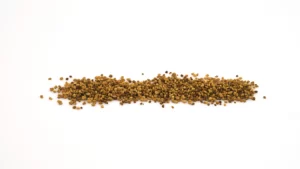Table of Contents
Introduction
In this systematic review and meta-analysis, we explore the effectiveness of honey-related treatment strategies in improving the signs and symptoms of dry eye disease (DED). We conducted a thorough search of multiple databases to identify relevant clinical trials, and extracted data on various endpoints from the included studies. Our findings demonstrate that honey-related treatment strategies are effective in improving the signs and symptoms of DED.
Background
Honey has been used for thousands of years in the treatment of various ophthalmic diseases. It is composed of carbohydrates, water, organic acids, proteins, amino acids, minerals, vitamins, enzymes, flavonoids, and antimicrobial components. The flavonoids and phenolic acids present in honey are believed to be responsible for its anti-inflammatory, antioxidant, and antimicrobial properties. Different varieties of honey exist, with Manuka honey being one of the most studied due to its potent antibacterial effects. Additionally, Royal Jelly, a substance secreted by worker honeybees, has also been used in the treatment of ocular diseases.
Dry Eye Disease (DED)
DED is a common ocular condition characterized by a disruption in the tear film, resulting in symptoms such as a foreign body sensation, blurred vision, pain, and photophobia. The causes of DED are multifactorial, including inflammatory or environmental conditions, hormonal imbalances, and oxidative stress. Current treatment options for DED include artificial tears, lifestyle changes, topical steroids or cyclosporine, lacrimal punctal occlusion, and oral omega-3 fatty acids. However, these treatments do not address the underlying inflammation processes, leading to a growing interest in alternative treatment approaches.
Methodology
We accessed multiple databases in March 2023 to identify clinical trials investigating the efficacy of honey-related treatment strategies in DED. Data from 323 patients were extracted and analyzed. The endpoints of interest included tear breakup time, Ocular Surface Disease Index, Schirmer I test, and corneal staining. The mean follow-up period was 7.0 ± 4.2 weeks.
Results
All the endpoints of interest significantly improved from baseline to the last follow-up in the honey-related treatment group. Tear breakup time, Ocular Surface Disease Index, Schirmer I test, and corneal staining all showed significant improvements. However, there was no significant difference in these endpoints between the honey-related treatment group and the control groups.
Discussion
The findings of this study suggest that honey-related treatment strategies are effective and feasible in improving the signs and symptoms of DED. The anti-inflammatory, antioxidant, and antimicrobial properties of honey, particularly Manuka honey, may contribute to its therapeutic effects. Additionally, Royal Jelly has been shown to stimulate tear secretion and improve tear volume in patients with DED. Further research is needed to investigate the specific types of honey and treatment protocols that may be most effective in DED.
Limitations
The main limitation of this study is the small number of included studies and the heterogeneity of the treatment protocols and control groups. Additionally, the length of follow-up varied among the studies. Future research should aim to address these limitations and provide more robust evidence on the efficacy of honey-related treatment strategies for DED.
In conclusion, honey-related treatment strategies, including Manuka honey and Royal Jelly, show promise in improving the signs and symptoms of DED. However, more research is needed to determine the optimal types of honey and treatment protocols for different subsets of DED patients.



